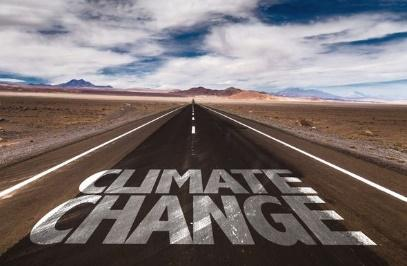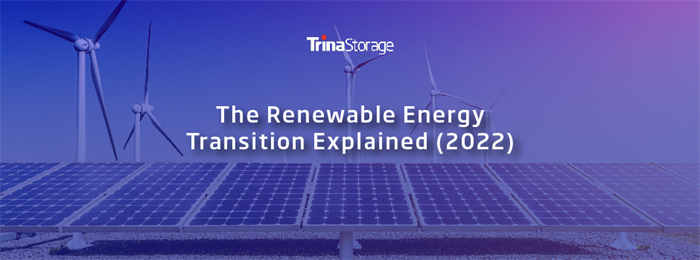With the cost of living crisis being felt around the world, oil and gas prices at record highs and events in Ukraine bringing new levels of concern for consumers everywhere, there has never been more focus and attention given to our fragile energy networks. We hear almost daily reports about gas pipelines being switched on and off on our electricity supply being dependent on factors which we cannot influence. All of this culminates in an ever increasing cost base for our energy bills which come from existing fossil fuel power generation.
In addition to this, it has been reported by the Intergovernmental Panel on Climate Change (IPCC) that around 3.5 billion people around the world already live in environments that are highly vulnerable to climate change, some of whom are already experiencing the devastating effects of natural disasters with floods, wildfires and intensifying storms which receive so much attention by the global media.
As a matter of urgency, we need to change how we provide energy for people, communities and businesses worldwide – and we need to do it now.

What is the renewable energy transition?
One definition offered by the International Renewable Energy Agency, the renewable energy transition is defined as: “the pathway towards a transformation of the global energy sector from fossil fuels based to renewable ‘net zero carbon’ energy by 2050.”
In essence, it is a detailed plan that outlines the actions required to comply with the United Nations Paris agreement of 2015. At its core, is the urgent need to reduce energy-related carbon emissions to limit climate change. Decarbonisation of the global energy sector will require an urgent, concerted and sustained effort on a global scale to have any effect and give our planet a chance to heal itself.
Why is the renewable energy transition important today?
It's important today, simply because we need to act today. Not tomorrow or next year.
The United Nations Secretary General, Mr Guterres gave a stark warning in his now famous “Highway to Climate Hell” speech that we are driving down the highway to climate hell, with our foot still on the accelerator.

Surely this cannot be true, can it? In terms of pumping carbon into our atmosphere, he is absolutely correct and climate scientists have bundles of evidence showing this case.
We desperately need to change our mindset, as well as our infrastructure.
An example of the terrifying truth is that as we emerged from the COVID-19 pandemic, we increased our global energy demand by around 4.5% and although policy support and deployment of renewables has never been stronger, unbelievably we responded to the increased demand by mainly reverting to fossil fuels.
Logically, this demand could have been dealt with easily by renewables, however, this surge in global energy demand actually increased our global carbon emissions to record levels according to some analysts. Governments around the world need to learn from this so we can manage the transition better.
Can we learn from our own history?
We have already seen how resilient our planet can be. In the 1980’s, when our scientists realised that we were destroying the Earth’s Ozone layer we identified the cause and then acted globally to stop pumping CFC gases into the atmosphere. The signing of the Montreal protocol gave our planet the opportunity of ‘healing’ itself. Let’s do it again!
It may now take decades to see the positive (or negative) effects of what we do today, but we must start now before we reach the ‘point of no return’ or what has been dubbed as the ‘Tipping Point’ where no matter what we do, the damage cannot be reversed.
The truth is that we really don’t know the full extent to which we can reverse the damage which we have already caused but it is clear we must stop making it worse. Doing nothing is not an option going forward.
With the world’s leading economies now actively leading the charge to set global climate policies to limit global temperature rise to 1.5 degrees, we can give ourselves a fighting chance of reaching our targets of coal burning being reduced by 95%, oil by 60% and gas by 45% compared to 2019.
What are the challenges of the energy transition?
It’s clear that a fundamental structure-shift in the global energy system is becoming increasingly urgent, with a particular focus on energy storage. Transitioning away from a fossil-fuel based energy system to an energy efficient and renewables based economy will equal a resilient, low-cost and sustainable energy future for all.
According to the International Energy Agency (IEA) (government advisors on energy policy), investment in renewable energy will need to triple by the end of this decade if the world's climate pledges are to be met.

Why is there a slow reported uptake in renewable energy to meet the demand?
7 reasons for slow uptake of renewables meeting global energy demand include:
- Climate change denial.
- Fossil-fuel lobby and political inaction has led to continued use of, and investment in, new fossil fuel initiatives – particularly coal.
- Unsustainable energy consumption as demand continues to consistently increase globally (despite the temporary decline in 2020 related to the COVID-19 pandemic).
- Insufficient policy support in buildings, agriculture & transport sectors.
- There has been an adoption, mainly of fossil fuels, to replace the declining use of traditional biomass in developing economies.
- Outdated energy infrastructure.
-
Financial constraints with lower incentives.
What are the solutions for the energy transition?
Energy storage, solar and wind energy comprise the bulk of added renewables, driven by supportive government policies and lowering costs. After staying resilient in 2020, these markets saw significant growth in 2021 with solar energy up 26% and wind energy up 7%. A record 175 GW of Solar was installed, accounting for well-over-half of the renewable additions.
Energy storage is key for increased renewable energy adoption
Renewable energy storage will play a central factor in the energy transition which could solve many of the production problems that green energy technologies face. Battery energy storage in particular has a critical role to play in ensuring homes and businesses can be powered by the increased adoption of green energy, even when the sun isn’t shining or the wind has stopped blowing.
The challenge remains though that electricity grids worldwide must match supply and demand with renewable power. Managing these peaks and troughs becomes more challenging when the target is to achieve net zero carbon production, by phasing out fossil fuel plants which have traditionally been used as a back-up to provide a reliable, steady supply of energy.
The Director of Energy at National Grid Renewables, Ken-Ichi Hino (USA), spoke to this challenge by saying: “energy storage enables further renewable generation, both from an operational and reliability perspective. It’s also a key piece of our utility customers’ ongoing evolution and transition to renewables. We see significant opportunities for pairing energy storage with our solar projects moving forward.”

Long seen as the missing link between intermittent renewable energy and constant reliability, energy storage has begun playing a broader role in the energy transition, with the potential to enable the eventual decarbonization of our energy systems. As costs reduce, renewable energy storage has the potential for broad use beyond the niche markets in which it is currently employed.
Trina Storage is at the forefront of Battery Energy Storage System (BESS) technology and continues to implement large utility-scale and commercial storage systems, like microgrids, in order to overcome the challenges presented by the renewable energy transition.
– END –

